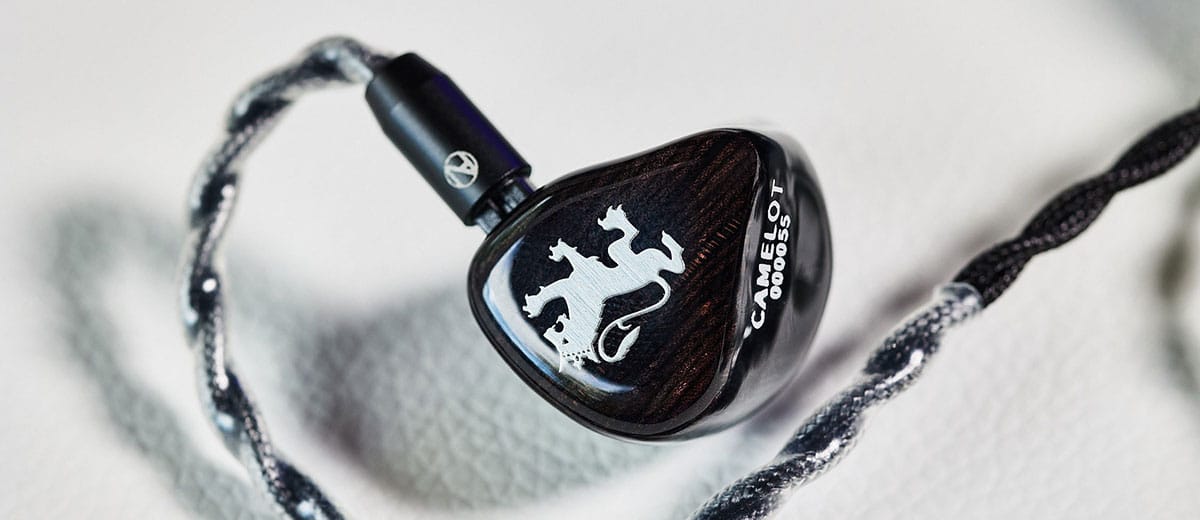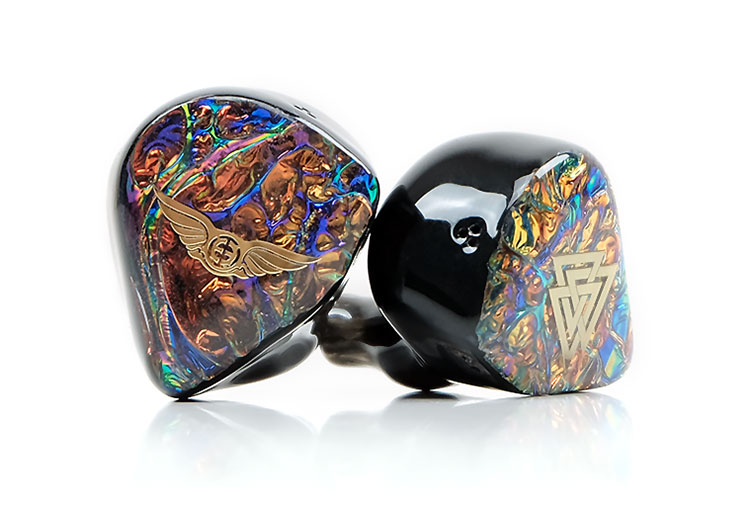Synergy
Efficiency
The Camelot is relatively easy to drive coming in with an impedance rating of 13Ω and a sensitivity level of 114db SPL. This is quite surprising given the fact the Camelot has 10 drivers in total with 2 of them being dynamic drivers and 4 electrostatics.
However, it did benefit from some additional voltage as its drivers, and like most EST driver hybrids they do come to life with more power.
Hence, with both the Cayin N8ii and Cayin N6ii Ti DAPs, the Cayin N8ii was the noticeably better pairing due to its P+ mode which allowed it to pump more voltage into the Camelot thus producing a better overall sound.
USB-C dongles such as the Cayin RU6 also worked well and there was no hissing or background noise during my pairing tests.
Pairings
The Camelot paired well with all sources during testing however its peak level of performance was achieved when connected to a neutral DAP or source. The reason is that without any further coloration, the bass and mid-range sound like they were performing to their full potential.
As a result, the Cayin N8ii was the most suitable source and best pairing. The pairing of the Camelot and Cayin RU6, which leans towards the warm side, was quite enjoyable as the RU6 allowed the Camelot to retain its engaging bass texture and quality, wholesome mid-range, and wide soundstage quality.
Select Comparisons
All comparisons were made with the Cayin N8ii as a source.
Empire Ears Odin
$3,399
Technical
The Empire Ears Odin is one of the most well-known technical monsters in the IEM realm. The Odin comes loaded with a staggering 11 drivers, 2 dynamic drivers, 5 balanced armatures, and 4 electrostatic drivers.
Composition-wise, the Odin and Camelot have a similar tribrid design with the Odin including one extra balanced armature. The Odin has an impedance of 3Ω and a sensitivity rating of 108dB SPL.
Design
The Empire Ears Odin shells are constructed from a jet-black resin shell similar to the Camelot. However, the overall size of Odin’s shell is the smaller of the two.
The Odin comes with its unique Bifrost faceplate depicting the rainbow bridge between Midgard and Asgard which is part of Norse mythology. This gives the Odin its distinct flair and colorful theme in contrast to the Camelot’s dark and medieval look.
The Odin comes equipped with a bespoke cable of its own called the Stormbreaker which is a 2-wire, OCC Copper Litz cable with variable wire gauging (24 AWG and 26 AWG). The Stormbreaker has a similar finish to the Avalon in the sense that both cables are fitted with a thick nylon jacket which is soft and supple.
Performance
Although both IEMs focus more on bass quality rather than quantity, the overall bass response on the Odin has more rumble, depth, and slam whereas the Camelot has less quantity but slightly better resolution and texturing in the mid-bass.
The Odin is not a bass-head IEM however there is noticeably more quantity and forwardness in the mid-bass. The Extreme Bass System on the Camelot slightly edges that of the Weapon 9+ drivers on the Odin for mid-bass texture.
If you prefer a greater bass quantity with high levels of bass quality then the Odin is your friend. However, if you prefer a lower amount of bass with a focus on quality and texturing, then the Camelot would be better suited.
The Odin has a more forward upper midrange whereas the Camelot has a more forward lower midrange with a less pronounced upper midrange The midrange quality, resolution, and coherency with other sound frequencies are similar between the two IEMs.
Both IEMs can detect the micro-details and present them in a way that is smooth, lush, and tonally balanced. The Odin has the slightly warmer timbre of the two IEMs.
The treble on the Odin comes off as sparkly with excellent extension, detail, and quality. This is similar to the Camelot as its treble has similar extension and overall quality.
The soundstage on the Odin is very wide and tall with a similar 3D effect, though the Camelot has a slightly taller soundstage. Imaging on both IEMs is similar and delivered with pinpoint accuracy.
64 Audio U12t
$1,999
Technical
The 64 Audio U12t, (universal version of the A12t), is an IEM that houses a total of 12 balanced armatures. This contrasts with the Camelot which uses a tribrid system made up of dynamic drivers, balanced armatures, and electrostatic drivers. The 64 Audio U12t has an impedance of 10Ω and a sensitivity rating of 108dB SPL.
Design
The U12t shells have a simple silver and grey design and are made out of aluminum and are a bit more robust for handling compared to the Camelot’s resin shell construction. The U12t’s shells are also much smaller than the Camelot’s which is because the U12t houses smaller balanced armature drivers only.
One notable difference between the stock cables is that the U12t comes with a 3.5mm unbalanced plug whereas the Camelot comes with a 4.4mm balanced termination.
Performance
The sub-bass on the U12t digs deeper and has more rumble. Both the sub-bass and mid-bass of the U12t are more forward in the overall sound signature.
The mid-bass on the U12t slams harder and is slow to decay which results in it being almost ever present in the sound signature. The mid-bass on the Camelot has less forwardness and quantity but has better control, texture, and quality. It is also punchier, faster, and cleaner.
The most noticeable difference between these two within the midrange is the timbre. The timbre is much warmer with the U12t which tends to give the midrange on the Camelot a more accurate feel to its timbral coloration when comparing the two.
The midrange on the U12t is not as far forward in the overall signature compared to the Camelot which has a more pronounced lower mid-range. With its advantage of having a more complex driver setup, the Camelot is able to produce higher resolution and quality within the midrange compared to the U12t.
The U12t treble comes off as slightly above neutral with excellent extension, detail, and quality. This is different from the Camelot as its treble has a similar extension but with better overall quality. Furthermore, its treble comes off as brighter and with more sparkle.
The soundstage on the U12t is very wide and tall though it does not have as much headroom and is also not quite as holographic sounding. Imaging from both IEMs is delivered with pinpoint accuracy. However, the Camelot has the edge when it comes to layering, spacing, and separation between instruments and vocals.
Our Verdict
The Camelot is an outstanding IEM that delivers an enveloping and incredibly coherent listening experience.
This is Nostalgia Audio’s best iteration of flagship-level audio quality and delivers this via its smooth mid-range, well-textured mid-bass, extended treble, and expansive soundstage. But do note, that this is not a basshead in-ear monitor. Other competitors will yield more quantity if that is what you are after.
It might not be a familiar name at the flagship level, but the performance is worthy of a solid demo alongside some of more the well-known brand leaders.
Nostalgia Audio Camelot Specifications
- 10 Individual Drivers, Tribrid Design
- 2 Dynamic Drivers – Sub-Bass, Bass
- 4 Balanced Armatures – 2 Mid, 2 High
- 4 Electrostatic Drivers – 4 Ultra-High
- 5-Way Crossover Design
- Extreme Bass System
- Spiral Flow Device
- Impedance: 13 Ohms @ 1kHz
- Frequency Response: 15 Hz – 40kHz
- Sensitivity: 114dB @ 1kHz, 1mW
- Bespoke Avalon High Purity OFC and OCC Copper Cable, Multiple Strand Design







